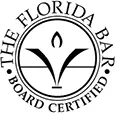Rear-End Collision Injuries

When another driver rear-ends your vehicle, the physical and emotional complications often change your life. While whiplash is the most well-known injury associated with rear-end collisions, a severe impact can contribute to many other serious problems. Rear-end accidents cause spinal injuries, fractures, and other serious conditions.
As with many accidents, rear-enders sometimes leave you with a vague awareness that a crash could happen again at any moment. The ideal of driving may leave you squeamish as you slip behind the wheel. You may feel uncomfortable when a vehicle approaches you from the rear. The physical and emotional challenges begin during your emergency treatment and continue as you try to reestablish your sense of what’s normal.
Rear-end accident-related injuries have a financial cost as well. Recovery is often stressful as well as expensive. You lose income during your initial recovery. Income losses continue due to temporary and permanent disabilities and changes in your ability to work. When you suffer from serious or catastrophic conditions, accommodating your injury often requires you to reassess your future and rework your entire life. If you or a loved one has recently been involved in a rear end collision, speaking with an experienced car accident lawyer at Boohoff Law can help determine your options for compensation.
Rear-End Accidents are Common
You have a right to feel worried about that car closing in on your rear bumper. Data from the National Highway Transportation Safety Association pinpoints rear-end collisions as a major cause of auto accidents nationwide. The 2017 Traffic Safety Facts Annual Report Tables document 4,509,000 accidents involving two or more vehicles. In 2,132,000 of those accidents, a rear-end collision was the first harmful event.
Law enforcement authorities consider rear-end accidents an “assured clear distance” problem. When a driver crashes into another vehicle’s rear, the obvious reason is that they failed to maintain a following distance that assured they wouldn’t strike the vehicle in front of them. In Washington, police cite drivers for following too closely. Rear-end accident citations explain what happened immediately before a crash, but they tell only half of the story.
When drivers fail to maintain an appropriate distance from the vehicle directly in front of them, it’s usually a consequence of another driving problem. Drivers who cause rear-end accidents are often engaged in the same driving behaviors that cause and contribute to numerous other types of accidents.
- Distracted driving: Drivers who are distracted by a phone, a passenger, or anything else lose the ability to focus on traffic and anything else going on around them.
- Speeding: Even if speeding drivers spot another vehicle in their path, excess speed diminishes their stopping capability. Braking is often ineffective as a speeding car requires a greater stopping distance.
- Driving under the influence: Drunk driving is a major factor in all accidents. A driver who uses alcohol before getting behind the wheel inevitably has impaired functioning, even at Blood Alcohol Concentration levels far lower than the legal limit.
- Drug-impaired driving: Although the statistics don’t specifically document rear-end accidents, the Washington State Traffic Safety Report shows that drug-impaired drivers caused 200 fatal accidents during 2017. Drivers who tested positive for THC were involved in 126 fatal accidents.
- Drowsy driving: Drowsy driving is difficult to track, but during 2017, Washington law enforcement officials confirmed that 9 fatal accidents involved drowsy drivers. Drowsy driving occurs when a driver operates a vehicle without adequate sleep, suffers from sleep apnea issues, takes medication that causes drowsiness, or consumes alcohol before driving.
Whiplash Injuries Are Common in Rear-End Accidents
When a vehicle strikes your car in the rear, the impact forces your head to move backward then forward. Your neck flexes and extends in a rapid whip-like motion. This often results in a soft tissue injury that normally, but not always, dissipates within weeks. But sometimes this whipping motion causes serious and life-altering injuries.
The National Institute of Neurological Disorders and Stroke researches whiplash and other trauma-related conditions and has observed a range of symptoms and conditions that often accompany a whiplash diagnosis. An injury that seems initially to involve soft tissues and ligaments can include the injured person’s head, neck, shoulders nerves, joints, and discs. People with whiplash injuries often suffer from headaches, inflammation, neck stiffness, and tingling. They also suffer from memory loss, concentration issues, and other cognitive and psychological problems.
Some Whiplash Injuries Don’t Improve
Doctors often treat whiplash injuries conservatively. When an injury doesn’t respond to traditional neck and back treatments such as pain medication, heat, and rest, healthcare providers move on to other remedies while reassessing the diagnosis. Given the neck and back’s intricate inner structure, doctors recognize that chronic pain often means a more advanced condition involve internal structures.
- Facet joint injury: Each vertebra has a facet joint on either side. When a patient’s whiplash injuries don’t respond well to initial treatment, the North American Spine Association explains that the problem is often a facet joint injury.
- Torn annulus: The annulus, which is a disc’s outer wall, houses nerve endings. Neck and back patients often suffer from unresolved pain when an accident causes a torn annulus.
- Disc issues: Whiplash injuries often damage the discs which form a person’s spine. When a disc herniates (bulges) it often affects the spinal cord and its nerves.
- Muscle sprain: Muscles sustain injuries during the initial accident trauma then become overworked while protecting injured spinal structures and nerves. This often contributes to chronic sprains.
Why Are Whiplash Injuries so Controversial?
Whiplash is a legitimate injury that’s been documented and proven by physicians. Although the neck and back damage associated with whiplash are often serious, the injury has developed a bad reputation over time. This is mostly due to insurance company misperceptions. The insurance companies that investigate and handle injury cases often train their adjusters to be suspicious of people who suffer neck and back injuries. They suspect that injured people often exaggerate or fake their whiplash injuries because the injury manifests itself in atypical ways.
- Serious whiplash injuries sometimes occur due to low-speed impacts.
- Injured people don’t always immediately manifest neck and back injury symptoms.
- A whiplash injury that begins as a minor condition can degrade into a far more complicated problem.
It’s Not Just About Whiplash
Rear-end accidents are notorious for the whiplash motion that causes back and neck injuries. The accidents often involve circumstances that cause a variety of other injuries. NHTSA’s traffic facts show that 615,000 vehicle occupants sustained injuries in rear-end accidents. Damages and injuries are far more serious when the striking vehicle is moving at a high speed or the driver doesn’t attempt to slow down or stop.
Differences in the colliding vehicles are also a factor in injury severity. SUVs and pickup trucks are often heavier with higher bumpers that sometimes cause extensive upper-vehicle damage to smaller cars. Tractor-trailers and other large commercial trucks weigh far more and require greater stopping distances. When SUVs, heavy pickup trucks, and large commercial vehicles strike a smaller vehicle in the rear, the results are often disastrous. These heavyweight impacts cause injuries that far exceed the whiplash neck and back injury classification.
Spinal Cord Injuries
When a crash is severe, it easily traumatizes a delicate human spine. In a serious crash, vehicle occupants sustain disc fractures, partial or complete paralysis, and other serious traumas. The more serious rear-end accident injuries require extensive medical treatment, physical and rehabilitative therapy. Spinal cord injuries cause temporary and long term disabilities and often change the injured person’s life.
Brain Injuries
Brain injuries sometimes occur when an impact moves back seat passengers forward. The rapid shift sometimes forces a rear seat passenger’s head into the back of the front seat. Traumatic Brain Injury Model System, which has tracked 16,495 TBI patients, explains that auto accidents cause 51 percent of all TBIs.
Serious traumatic brain injuries require long term treatment and rehabilitation. Brain-injured victims must learn to manage their lives with modified physical and mental capabilities. As time passes, patients may recover somewhat from their initial injuries, but even healed brain trauma paves the way for future brain conditions. Information from the Brain Injury Association of America suggests that persons with TBIs often have an increased potential for dementia, Parkinson’s disease, seizures, and other conditions.
Fractures
When a heavy vehicle crashes into the rear of a smaller car, the small car’s structure easily gives way. Metal intruding into a rear passenger’s space often causes upper body and limb fractures.
Internal Injuries
Seatbelts constrict a rear passenger’s chest upon impact causing chest injuries and bone fractures. Broken bones and bone fragments cause additional injuries from puncturing and tearing internal organs.
Psychological Trauma
As with most auto accidents, victims of rear-end collisions sustain more than just physical injuries. Psychological trauma is a common rear-end accident after-effect, although people rarely refer to it as a psychological injury. When describing the emotional and mental concerns that follow a rear-end accident, injured victims, insurance companies, and even attorneys use traditional phrases such as anxiety and emotional distress.
Psychological trauma can be subtle like the paranoia you feel when another vehicle gets a bit too close to your vehicle’s rear. It can be dramatic like the sense of doom that overtakes you when you’re confronted with the mere idea of getting behind the wheel. A Psychology Today article by forensic psychologist James F. Zender, Ph.D., advises that there are structural and functional similarities between patients suffering from accident-related traumatic brain injury and post-traumatic stress disorder. Zender has helped many patients as they struggled with PTSD and other accident-related conditions.
Fatalities
The idea that rear-end accidents don’t cause serious injuries is an easily-disputed myth. Nationally NHTSA-compiled data show that 2,456 vehicle occupants sustained fatal injuries in rear-end accidents.
Rear-Seat Passengers Require More Safety Features
Both rear and front-seat passengers sustain injuries in rear-end accidents. Those seated in the rear encounter greater safety challenges that often make their injuries worse. The Insurance Institute for Highway Safety recently published an article cautioning vehicle manufacturers about rear-seat safety concerns. The title of the IIHS article explains it simply, “Rear-seat occupant protection hasn’t kept pace with the front.”
When the IIHS studied passenger injuries, it found that recent advancements in airbags and seatbelts provided a higher level of security for front-seated passengers.
- Front seat belts employ crash tensioners that immediately tighten around front seat occupants upon collision.
- Force limiters prevent the excess seatbelt restriction that causes chest injuries.
- Front airbags deploy immediately.
Rear-seated passengers don’t have the same level of protection. While failure to use seat belts can be a problem with rear-seated passengers, belted passengers sustain serious injuries as well. Rear seatbelts don’t include limiters or tensioners. Side airbags protect rear-seat passengers but offer no frontal protection.
To reduce rear-seat passenger injury severity, IIHS has several safety recommendations. They suggest that car manufacturers enhance rear-seat safety with inflatable seat belts to protect the chest and force limiters to reduce seat belt chest pressure. They further recommend rear seat frontal airbags to protect passengers’ heads from contact with front seats.
Dealing With Insurance Companies
During the initial hours and days following a crash, you may be under a doctor’s care, in pain, on medication, and confused about your best course of action. That won’t stop an insurance company claim department from contacting you, however. No one can force you to talk to the other driver’s insurance carrier but, to preserve your coverage, you usually should talk to our own company’s claim department representative.
In these conversations, it is important to choose your words carefully. If you don’t recognize and understand all of the legal issues, you could easily say something that might jeopardize your insurance coverage or your legal rights.
Should You Contact an Attorney?
Yes—after getting injured in a rear-end accident that’s someone else’s fault, consult a car accident attorney as soon as possible. Attorneys handle the legal details so you have the time and space to recover.
A personal injury consultation is a simple exchange of information. Your attorney discusses your accident and your injuries and counsels you on how best to proceed. You can learn more about the legal process without making a commitment. When you’re ready to proceed, your attorney can take the appropriate legal steps on your behalf.
2200 6th Avenue, Suite 768
Seattle, WA 98121
Free Consultation
We Are Here For You 24/7
Reviews
– Elissa M.
“Really pleased with Boohoff Law! Received immediate responses when I had any questions. Treated amazingly by all staff … made this process a true breeze!”
– Caitlyn M.
– Brandy K.
Related Posts
When to Hire a Personal Injury Lawyer
How Much Does Workers’ Comp Pay for a Back Injury?
How to Get the Most Money From a Car Accident
Recovery is personal.
You're better off with Boohoff.











The information on this website is for general information purposes only. Nothing on this site should be taken as legal advice for any individual case or situation. This information is not intended to create, and receipt or viewing does not constitute, an attorney-client relationship.
available 24/7
(877) 999-9999
